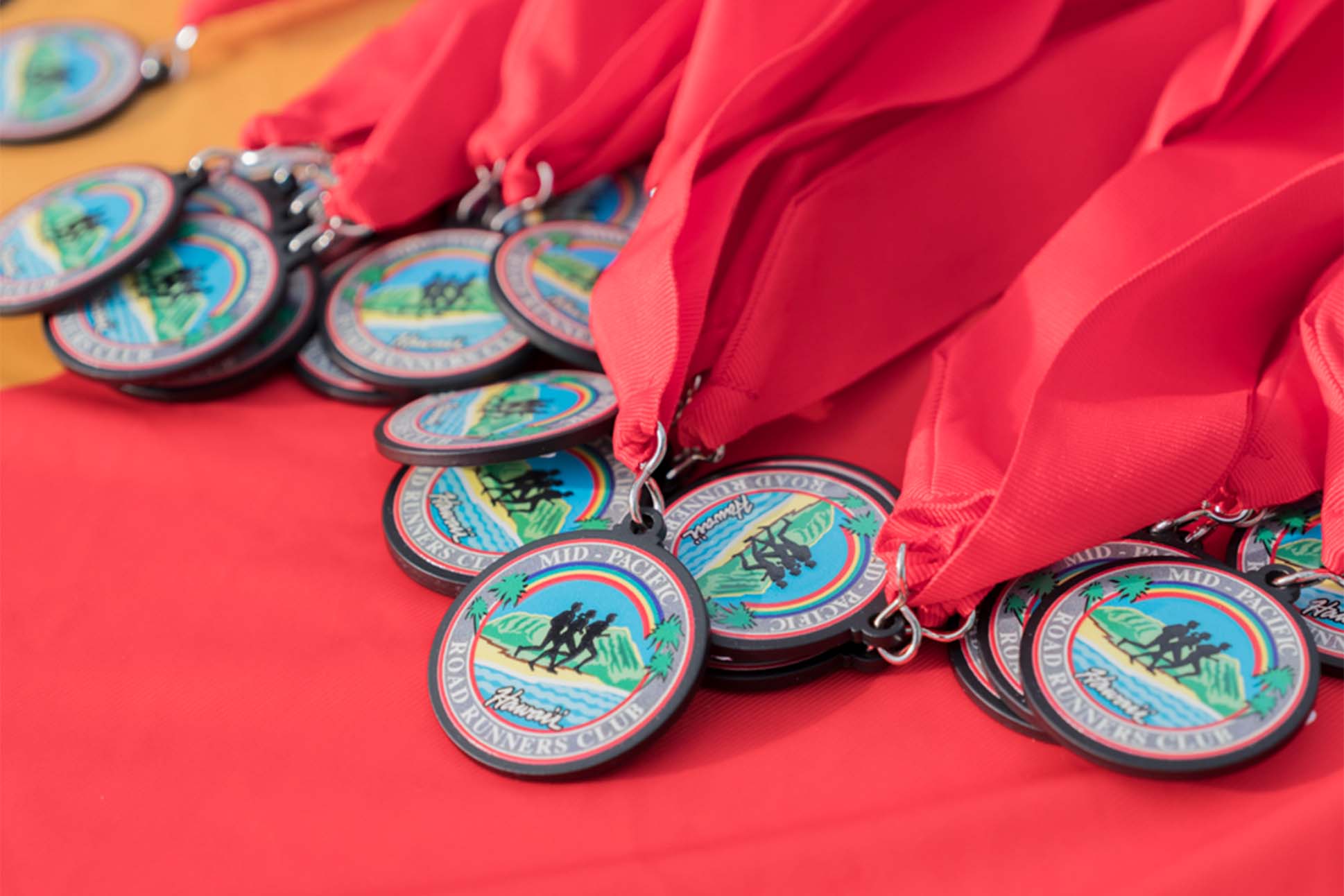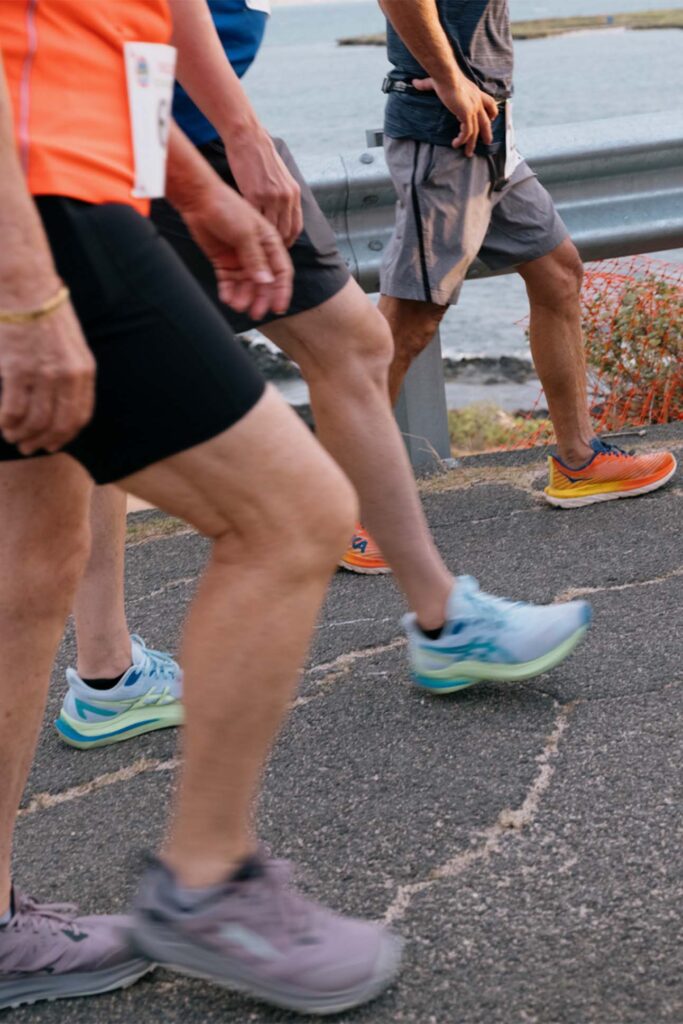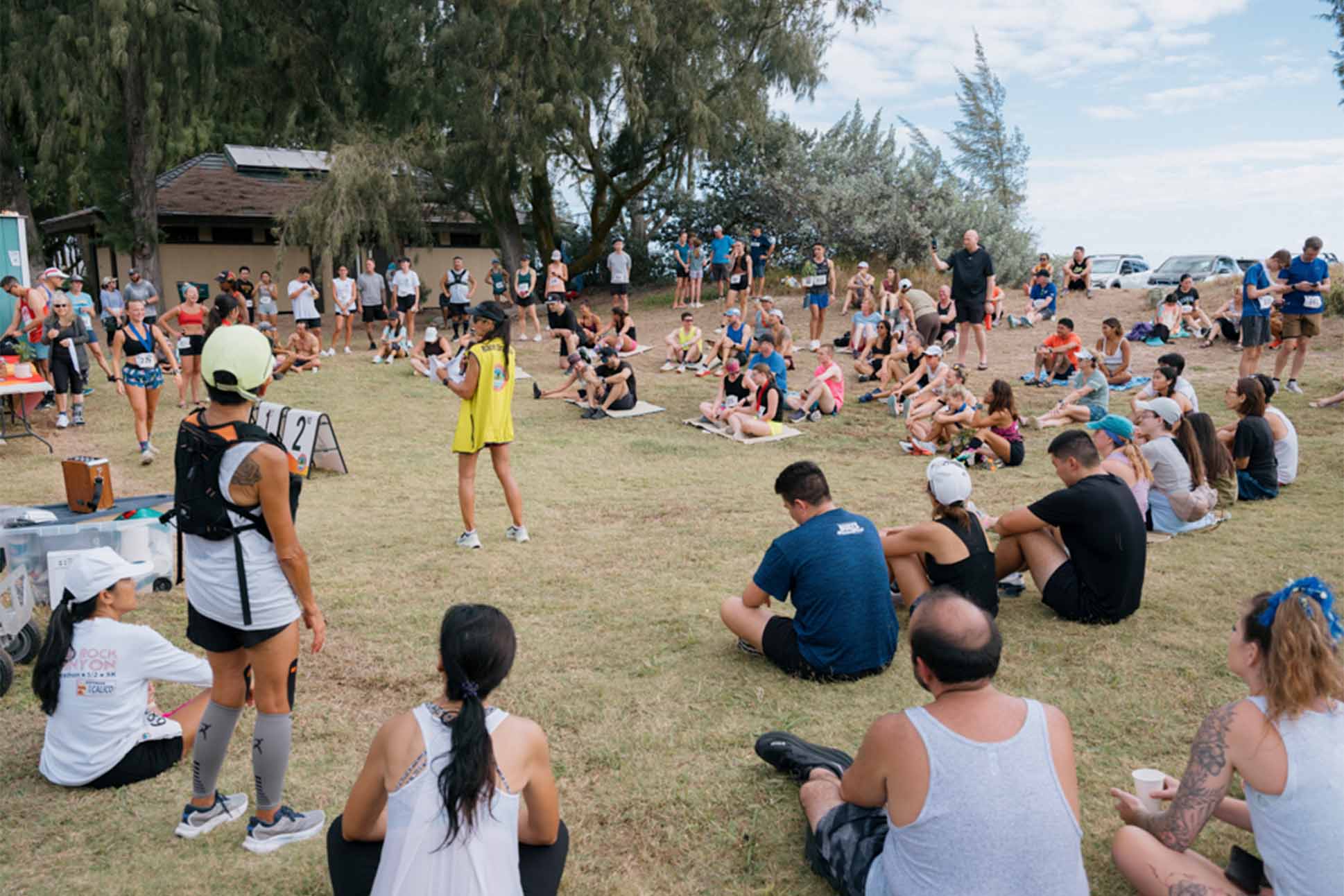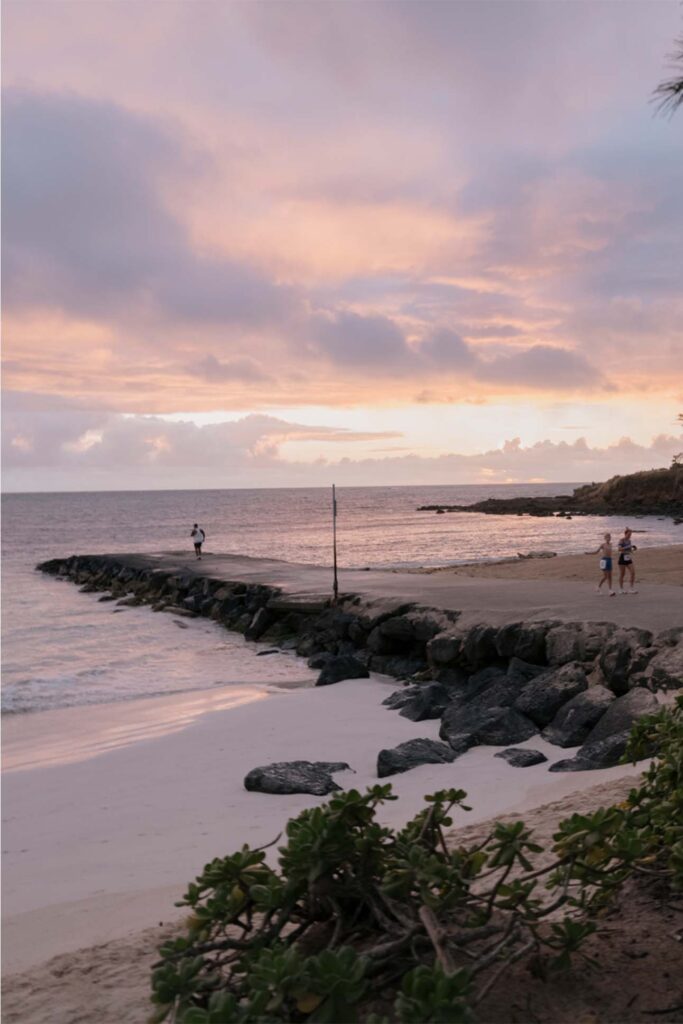Fueled by the pandemic running boom, which saw an estimated 28 percent increase in runners, run clubs have mushroomed in recent years, popping up in countless communities across the globe. Generation Z forms the largest group of new runners, but run clubs aren’t just a new viral trend—some have been around for decades, steadily training local runners and offering community to those with a love of the sport.
Founded in 1962, the Mid-Pacific Road Runners Club (MPRRC) is Hawai‘i’s oldest running club. Every year it hosts approximately 20 races on O‘ahu, ranging from 5K fun runs to beach races to half-marathons. Instead of hosting weekly meetups or workouts, the club focuses on a year-round schedule of high-quality running competitions. With more than 800 active members—the most of any other run club in Hawai‘i—it consists of athletes of all abilities and ages, including professional runners and hobbyists alike.
On a warm morning in July, MPRRC members chat, stretch, and mingle about like a kaleidoscope of athletic wear on the quiet streets of Lanikai. Neighbors, classmates, seasoned runners, and new converts greet each other with a jittery pre-competition energy. Then, a quiet descends over the crowd as the runners take their places at the starting line. The air horn blasts. Some tap their watches, taking off at a conservative sprint; others find an easy jog. The kids among them go mad trying to take an early lead. It’s all a typical race day for MPRRC.

Jonathan Lyau is one of the club’s most storied members. Running since 1979, he has completed almost 40 marathons in the last 40 years and was inducted into the Honolulu Marathon Hall of Fame in 2009. He first joined MPRRC in the early ’90s, and today he is among its many lifetime members. Even at the age of 61, Lyau maintains an active presence in the club and participates in a race just about every month.
The self-described retired racer exemplifies why those at MPRRC keep running the good race. “I enjoy being out there,” Lyau says. “You see people you don’t normally get to see, catch up, and talk story.” While his days of setting personal records may be behind him, Lyau explains that running with MPRRC isn’t just about competing. “When I’m out there moving, I feel good,” he says. “A lot of it is just about staying in shape and staying healthy.”
According to club president Kane Ng-Osorio, big races have big expenses, from hiring police officers and shutting down streets to buying race bibs and timing equipment. “It can cost thousands of dollars,” he says. But Ng-Osorio is quick to emphasize the importance of maintaining the club’s year-round programming, not only to cultivate a sense of community but to accomplish the club’s core tenet of promoting a vigorous lifestyle. To help fund other events, MPRRC also partners with the United States Veterans Initiative and Shaka Racing, among other organizations.


MPRRC’s races are intentional in their design, offering a diverse range of running experiences on O‘ahu. Ng-Osorio likes waking up early on New Year’s Day to catch one of MPRRC’s most unique races, the Bosetti First Sunrise 10K in Kalama Valley Park. Lyau enjoys the Old Pali Road Run and the Lanikai 8K. For longtime member Jeanine Nakakura, events like the Mother’s Day 10K in Moanalua Gardens and the Santa Hat 5K at Ala Moana Beach Park keep her coming back.
Though MPRRC often attracts visitors eager for a taste of the action, the club remains “very local,” Nakakura says, something that distinguishes it from many of the nearly 20 other running clubs on O‘ahu, each with its own culture and congregation. “My nieces go with run clubs that meet up in Waikīkī,” Nakakura says. “I’ve seen them—all these hot bodies dressed to impress.” In contrast, MPRRC isn’t about appearances, and it’s largely homegrown. Many of the runners have known each other since high school, returning year after year with their spouses and kids in tow to deepen their connection to the places where they run.
In this way, MPRRC offers a different running experience for visitors, allowing them to engage with a genuine version of O‘ahu and its people. “Visitors always love coming to these runs,” Nakakura says. “We make that connection and show them what Hawai‘i is really like.”


For many runners, the sport is a solitary one. Yet runners like Nakakura have come to understand the joys of communal runs. On one such morning trek, as she rounded the top of Diamond Head Road, a friend running with her told her to pause and take it all in. As the sun rose above and the ocean glistened below, her friend raised his hands and said, “This is why we do it.”
“You forget,” Nakakura says. “Sometimes, someone has to remind you.”


